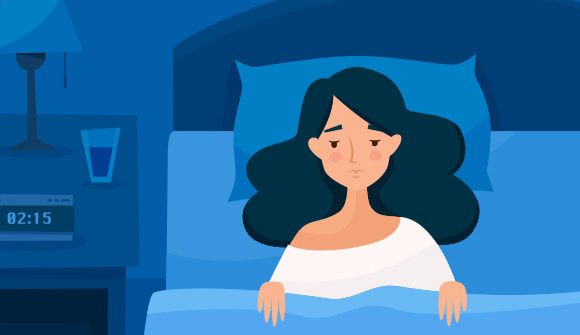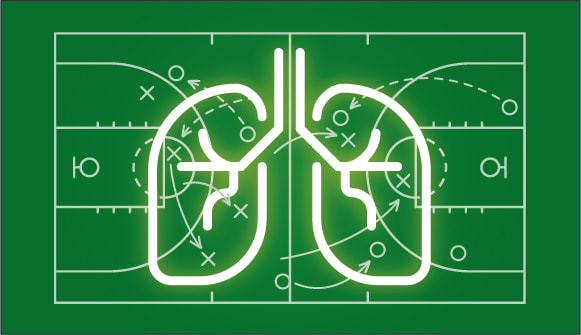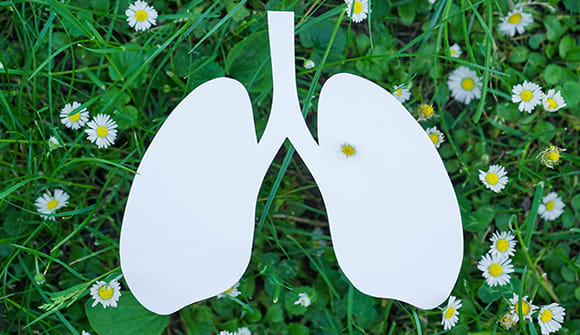Clearing the air
Effects of vaping on the young lung.
Article Date:

The U.S. Food and Drug Administration (FDA) has issued an order to remove JUUL Labs Inc. products – the most popular vape amongst teens – from shelves, once again bringing the negative health effects of e-cigarettes to the forefront.
When e-cigarettes, or vapes, were first introduced years ago, they were marketed to adults as a safer alternative to traditional tobacco products. In subsequent years, multiple scientific studies proved vapes are definitely not a "healthy cigarette". Unfortunately, during that same time, vaping became an epidemic among children and teens, and it's negatively affecting the kids as much as adults – particularly when it comes to lung health.
According to the Centers for Disease Control and Prevention (CDC), in 2021, more than 2 million U.S. middle and high school students said they used e-cigarettes in the past 30 days, including 2.8% of middle school students and 11.3% of high school students.
Toxic vapors
The liquid that users inhale and exhale from a vape isn't harmless water vapor as some believe. Per the CDC, it actually may contain substances including:
- Cancer-causing chemicals
- Flavorings linked to lung disease
- Heavy metals such as lead, nickel and tin
- Nicotine (a single JUUL pod contains as much nicotine as 20 cigarettes, according to the manufacturer)
- Ultrafine particles that can be inhaled deep into the lungs
- Volatile organic compounds (man-made chemicals used and produced in the manufacture of paints, pharmaceuticals and refrigerants)
As a result, lung-related illnesses related to vaping are on the rise in the younger population.
Can't breathe
Jorge Glass, MD, a pulmonologist with Baptist Medical Center Nassau, recalled seeing his first teens with e-cigarette- or vaping-associated lung injury (known in the medical community as EVALI) in 2019 and 2020, right as COVID-19 was coming into play. He remembered, "The damage in one young patient's lungs was comparable to what we were starting to see with COVID-19, so it was hard to determine which illness he had."
EVALI can be caused by vitamin E acetate (an additive in some e-cigarettes), THC (the main psychoactive compound in marijuana) and other substances in vaping materials. Symptoms can be similar to many other respiratory diseases:
- Chest pain
- Cough
- Diarrhea
- Dizziness
- Fever and chills
- Headache
- Rapid heart rate
- Shortness of breath
- Vomiting
Treatment depends on the severity of the illness, but can include antibiotics and/or antivirals, and corticosteroids to help fight inflammation. Patients with more severe cases may need hospitalization and could be placed on a ventilator.
In addition to EVALI, other lung illnesses that can be attributed to vaping include:
- Collapsed lung: Similar to the deflation caused by a hole in a balloon. The hole can be the result of an injury, or caused when blisters on top of the lungs that formed during a period of accelerated growth (like puberty) rupture. Vaping has been associated with an increased risk of ruptures.
- Lipoid pneumonia: A disease caused by inhaling the oily substances found in the e-liquid. "You shouldn't inhale oils or anything with fat in it," said Dr. Glass.
- Popcorn lung: Clinically known as bronchiolitis obliterans (BO), this is permanent damage of the lungs' small airways, usually caused by diacetyl, a chemical added to enhance the flavor of the e-liquid.
Studies are underway to determine whether vaping contributes to lung cancer or COPD. However, as with smoking tobacco, vaping can carry tiny particles deep into the bronchial tree, leading to cancer. Dr. Glass believes teens who vape may be more susceptible to developing asthma, as well.
"These are just the risks we know now," said Dr. Glass. "More could be found in the future."
It's important to keep in mind that second-hand vape can also have harmful effects on friends, siblings or anyone else who happens to be nearby someone using an e-cigarette.
Next steps
The FDA's ban on JUUL products won't stop teen vaping, but it serves as another reminder of the risks associated with the habit.
Dr. Glass said, "Basically, no one should be inhaling any non-medicinal substance into their lungs. Vaping is not a safer way to smoke."
In addition, it could lead to more problems.
"If teens are addicted to vaping, they could go on to be smokers or use other substances at the risk of their health," said Dr. Glass. "Parents should remain vigilant about what their kids are doing, understand the risks involved, and discuss those risks with them."
Are you wondering if vaping is affecting your child's health? Speak to your child's pediatrician or contact the pediatric pulmonology team with Wolfson Children's Hospital and Nemours Children's Health, Jacksonville, at 904.697.3600. If you're an adult who's having symptoms of respiratory disease, click here to find a pulmonologist near you.



